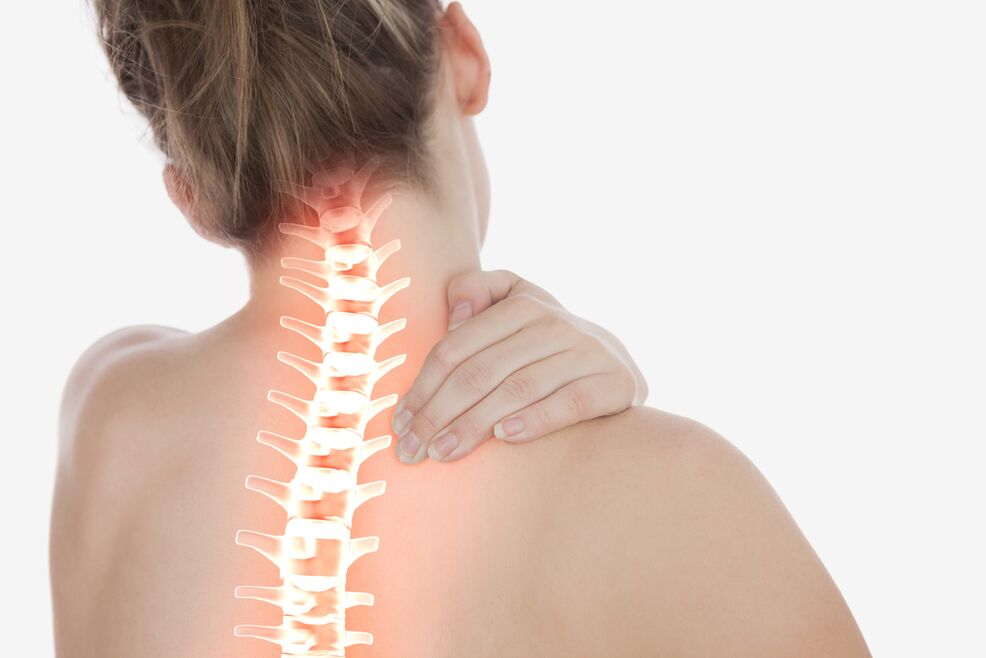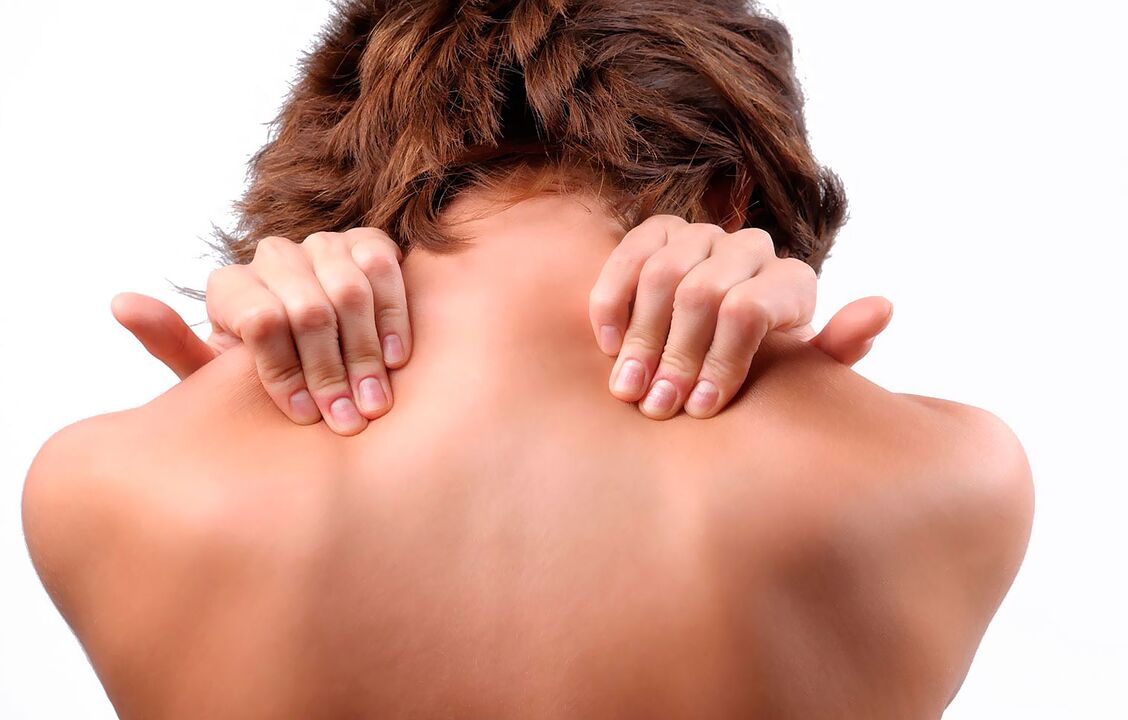The spine is a disease caused by the destruction of bone and cartilage tissues of the osteocondrosis, cervical, thorachal and waist waist.
First of all, the central part of the spinal disease is changed - it is so reactive jet core. Therefore, Vertebra loses some of the utblah properties and loses elegant and cracks in the fibrous ring along the disk peripheral.

The further advancement of the osteocondrosis of the spine causes aggravation of the disease - communication or fibrous ring and intervertebral hernia cause disks or disgrace. In the affected area, the instability of the spine causes restricting mobility in the osteocondrosis of pain and cervical spine, as well as a limited mobility of the thoracic spine and back room.
In 75% of the work, it is the full osteocondrosis of the spine, which is the cause of back pain. With age, spinal tissue dystrophy is significantly increasing, so the second residency of the planet above 30 years old is marked by signs of spine osteocondrosis.
Provocation factors in the development of the osteocondrosis of the spine are considered to be rear or systematically with professional employment in hard physical work or vibration. If you need to do many downloads and unloading, buy a hydraulic collection for your car.
The early manifestation of the symptoms of the osteocondrosis of the spine is weakly physical development, flat foot or excess weight. There is a genetic tendency to the empty structure of the abnormalities of intermediate discs and waist structure. Violation of the rules of distribution of cargo in the background in the gym, the violation of a sedentary lifestyle and improper nutritional rules, in terms of spine health.
The disease shows itself as a number of typical symptoms. The spinal osteochondrosis is characteristic: pain in the back, affected spine, reducing the amplitude of the action, coughing or increased tension during sneezing increased.
Chronic pain is one of the symptoms of the osteocondrosis of the spine, causing increased fatigue. The pain can be more intense and sharp while the nervous roots of the spine squeezes. In this case, its localization is not limited to the rear area, but it feels by a person in the limbs.
The phase of the disease depends on the severity of the symptoms of the spinal osteocondrosis. In the first stage of the osteocondrosis of the spine, the pain is almost not felt, only light and weakness of spine, weakness for injuries. The destruction of the fibrus rim is a symptom of osteocondrosis of the spine in the second stage of the size of vertebral cracks and the pain of various intensity.
The third stage of the disease is characterized by significant deformations of bone and vertebral tissue until the appearance of intervertebral torns. The sign of osteocondrosis of the most violent fourth stage is a complete or partial paralysis of the limbs caused by mass bone growth, limited mobility, intense pain, as well as nervous roots.
Osteocondrosis of cervical spine often leads to blood circulation disorders due to the creation of vessels. This causes intense headache, dizziness and fainting. With the osteocondrosis of cervical spine, the vertebrate artery syndrome is sometimes observed. In front of the head, the "flies" or characterized by a sense of noise in the image of colored spots. Cervical spine is also possible in shoulders or hands in their shoulders or hands.
Osteocondrosis of the spine of the spine can aggravate the course of various heart pathologies. The disease leads to the development of intercom nevralgy (gender nerves). Toraki is observed in the chest in the center of the chest with osteocondrosis of the spine.

Osteocondrosis of the lomber spine leads to the development of the following diseases: Lumbago and hernia.
Isias, thus, one of the complications of the osteocondrosis of the waist waist, this is characterized by pain, hypotension (tone) damage in the gluteal area in the gluteal region.
With the labbago symptom of the lily of the labbag, there is a sharp pain caused by the lbumbago symptom, lower protection or loss of spine disk.
Lomber Radisulitis, another complication of the waist waist osteocondrosis, is provoked by the ruptures of the lowest discs of the spine. The radiation behind the thigh is accompanied by pain in a hole in the bottom of the knee, the bottom leg and a hole in the leg.
The initial diagnosis of "osteochondrosis of the spine" is established by a neurologist after a preliminary examination in connection with the patient's back pain and limited mobility. The stage of the spine is determined depending on the stage of the waist deformity, the patient's posture and the number of affected disks.
All the symptoms above the osteocondrosis of the spine are diagnosed by feeling the patient's back. The doctor also pays attention to the situation of muscle tone. In most cases, the disease is accompanied by hypertension of rear muscles.
Using tests to bend the spine, the patient's actions are determined. Thanks to the use of radiography, CT and MRI, it was diagnosed and determined the future tactics of the treatment of spinal osteocondrosis.
Conservative and surgical methods are used in the treatment of osteocondrosis of the spine. The purpose of both is to avoid pain syndrome and prevent further progression of spinal deformity.
At the same time, surgical treatment of spinal osteochboard is only used if the conservative therapy of the disease is ineffective.
The active phase of the application of conservative methods lasts for an average of 2 months. At the beginning of this, a short increase in the body's drugs, physiotherapy teachings (training therapy) and physiotherapy pain syndrome. The conservative treatment of spine, massage, hand therapy, extract and osteocondrosis of reflexology is also used. The effectiveness of the treatment of osteocondrosis of the spine depends on the systematic nature of the patient's own procedures and perseverance in the implementation of training therapy complexes.
Surgical treatment of spinal osteocondrosis is carried out with the hernia of intervertebral disks, which has long been more than 6 months ago. The indication for the operation is to reduce the gap between the 1/3 of the first size of the background and the root of the spinal cord.
The leading method in the surgical treatment of spinal osteocondrosis I. E. Operation Microdisectomy method, using the B-Twin system can be minimally invasive using endoscopic tools, as well as the deformed disk core laser evaporation.
After the surgical treatment of the osteocondrosis of the spine, a rehabilitation period is expected in 6 months. During this time, patient, physiotherapy, hand therapy, acupuncture, etc.



















